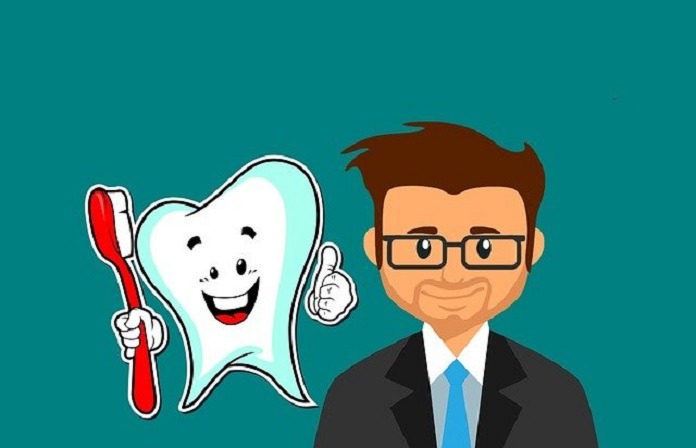Receding gums are gums that have pulled away from the teeth, exposing their root surfaces. This leaves the teeth at risk of decay, infection, and loss. If the recession is severe, it can cause symptoms, such as tooth sensitivity, pain, or infection. Can this process of gum receding be reversed?
The gums (gingiva) form the dense part of the soft tissue lining of the mouth. The gums are responsible for covering the roots of the teeth in order to protect them. Healthy and intact gums are essential for overall health.
Causes of receding gums
Receding gums are a common condition in individuals over the age of 40. Around 88% of people over 65 years of age have at least one site with recession.1 However, receding gums are not an inevitable part of the human ageing process. Other factors that can cause receding gums include poor dental hygiene, wear and tear, or years of aggressive tooth brushing. In many cases, receding gums are a result of periodontal (gum) disease.
Gum disease begins when bacteria-containing plaque accumulates on the teeth and gums. When oral hygiene is poor and plaque is not removed daily, toxins are produced that irritate and inflame the gums, leading to gingivitis. In the early stages, gum disease (indicated by red or swollen gums that bleed easily) is reversible and can be detected and treated by your dentist. However, as the disease progresses into chronic inflammatory periodontal disease, tissues and bones can be destroyed. In advanced stages of periodontal disease, teeth can become loose, fall out, or must be removed by a dentist.2
Risk factors for the development of gum disease include smoking, hormonal changes in women, diabetes, and genetic susceptibility. Symptoms of gum disease include bad breath, red, swollen, or bleeding gums, painful chewing, loose or sensitive teeth, and receding gums.
Although receding gums cannot be reversed, there are ways to treat them, including natural remedies, deep cleaning, and tissue grafts.
Potential methods to slow down the process of gum recession
Mild gum recession can be treated by deep cleaning the affected area. This involves removing the plaque and tartar that has built up on the teeth and smoothing the exposed root area to make it more difficult for bacteria to attach itself.
Some popular natural remedies to treat receding gums include green tea, aloe vera, and oil pulling:
- It has been suggested that the catechins present in green tea promotes periodontal health by reducing inflammation, preventing bone resorption, and limiting the growth of bacteria linked to periodontal diseases.3
- Studies have shown improvements in periodontal conditions using aloe vera by reducing bleeding, inflammation, and swelling of the gums.4
- Oil pulling involves swishing oil in the mouth to strengthen teeth, gums and the jaw. The oil should not be swallowed as it contains bacteria and toxins.5
With receding gums, it is common to experience sensitivity that results from the exposed root surface. Your dentist will be able to recommend products to reduce the sensitivity of these vulnerable root surfaces and protect them from decay.
Surgical treatments
For severe cases, it may be necessary to undergo surgery to remove bacteria under your gums or replace gum tissue.
Flap surgery:
- This involves lifting the gums back, removing tartar, and suturing the gums back in place.
- This common surgery helps to remove tartar deposits in deep pockets and can prevent bone loss.
Gum grafting:
- If your gums have severely receded, it may be possible to graft tissue from another site in the mouth to cover a portion of the exposed root surface.
- This helps to reinforce the fragile gum tissue to protect them from further recession.
Bone grafting:
- Natural or synthetic bone is placed in the required area and can help regenerate any bone lost to periodontitis.
Preventing gum recession
Good oral hygiene habits are essential to prevent all gum conditions:
- Brush twice a day with a soft toothbrush
- When brushing, use mild-to-moderate pressure and small circular or very short back and forth motions
- Avoid using hard toothbrush bristles
- Floss regularly to remove plaque from between the teeth
- Visit the dentist often for routine check-ups
Daily brushing and flossing, in addition to regular visits to your dentist, are extremely important to protect your gums and prevent them from receding. It is also crucial to eat a healthy and balanced diet and quit smoking to prevent gum recession.
References:
1. Kassab M and Cohen R. (2003). The etiology and prevalence of gingival recession. JADA, 134(2), 220-225. Retrieved from: https://jada.ada.org/article/S0002-8177(14)61986-3/fulltext
2. Jati A, Furquim L and Consolaro A. (2016). Gingival recession: its causes and types, and the importance of orthodontic treatment. Dental Press J Orthod, 21(3), 18-29. Retrieved from: https://www.ncbi.nlm.nih.gov/pmc/articles/PMC4944726/
3. Chatterjee A, et al. (2012). Green tea: a boon for periodontal and general health. J Indian Soc Periodontol, 16(2), 161-167. Retrieved from: https://www.ncbi.nlm.nih.gov/pmc/articles/PMC3459493/
4. Bhat G, Kudva P and Dodwad V. (2011). Aloe vera: nature’s soothing healer to periodontal disease. J Indian Soc Periodontol, 15(3), 205-209. Retrieved from: https://www.ncbi.nlm.nih.gov/pmc/articles/PMC3200013/ 5. Singh A and Purohit B. (2011).
5. Tooth brushing, oil pulling and tissue regeneration: a review of holistic approaches to oral health. J Ayurveda Integr Med, 2(2), 64-68. Retrieved from: https://www.ncbi.nlm.nih.gov/pmc/articles/PMC3131773/
Image by mohamed Hassan from Pixabay
The article below contains sponsored links to other sites; these links are being provided as a convenience and for informational purposes. The editorial staff of the Medical News Bulletin had no role in the preparation of the contents of these linked sites and are not responsible for the accuracy or content of the linked sites. The views and opinions expressed in the sponsored links are those of the advertiser and do not reflect those of the Medical News Bulletin. The Medical News Bulletin does not accept liability for any loss or damages caused by the use of any products or services, nor do we endorse any products, services, or links in our sponsored links.



